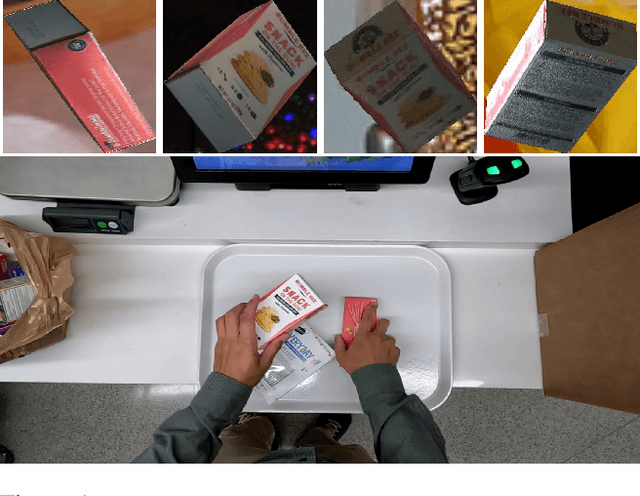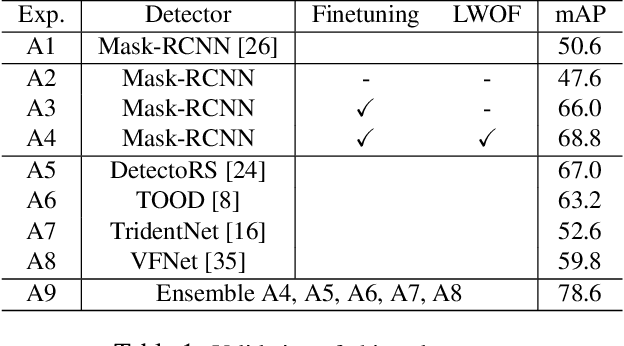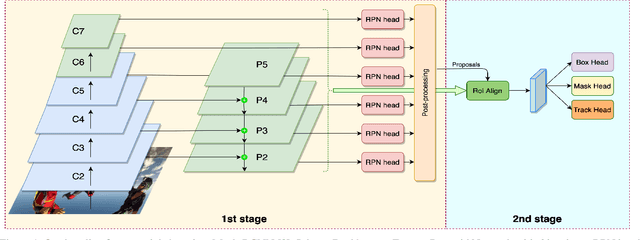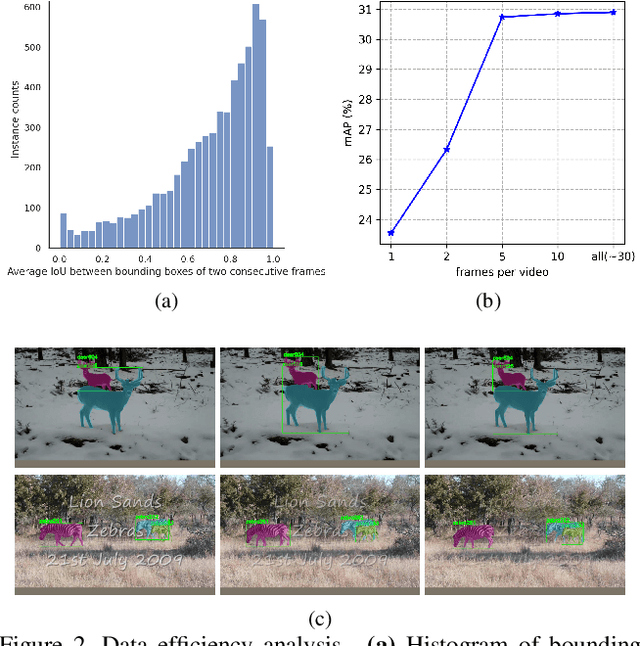Nam LH. Phan
Improving Domain Generalization by Learning without Forgetting: Application in Retail Checkout
Jul 12, 2022



Abstract:Designing an automatic checkout system for retail stores at the human level accuracy is challenging due to similar appearance products and their various poses. This paper addresses the problem by proposing a method with a two-stage pipeline. The first stage detects class-agnostic items, and the second one is dedicated to classify product categories. We also track the objects across video frames to avoid duplicated counting. One major challenge is the domain gap because the models are trained on synthetic data but tested on the real images. To reduce the error gap, we adopt domain generalization methods for the first-stage detector. In addition, model ensemble is used to enhance the robustness of the 2nd-stage classifier. The method is evaluated on the AI City challenge 2022 -- Track 4 and gets the F1 score $40\%$ on the test A set. Code is released at the link https://github.com/cybercore-co-ltd/aicity22-track4.
1st Place Solution for YouTubeVOS Challenge 2021:Video Instance Segmentation
Jul 09, 2021



Abstract:Video Instance Segmentation (VIS) is a multi-task problem performing detection, segmentation, and tracking simultaneously. Extended from image set applications, video data additionally induces the temporal information, which, if handled appropriately, is very useful to identify and predict object motions. In this work, we design a unified model to mutually learn these tasks. Specifically, we propose two modules, named Temporally Correlated Instance Segmentation (TCIS) and Bidirectional Tracking (BiTrack), to take the benefit of the temporal correlation between the object's instance masks across adjacent frames. On the other hand, video data is often redundant due to the frame's overlap. Our analysis shows that this problem is particularly severe for the YoutubeVOS-VIS2021 data. Therefore, we propose a Multi-Source Data (MSD) training mechanism to compensate for the data deficiency. By combining these techniques with a bag of tricks, the network performance is significantly boosted compared to the baseline, and outperforms other methods by a considerable margin on the YoutubeVOS-VIS 2019 and 2021 datasets.
 Add to Chrome
Add to Chrome Add to Firefox
Add to Firefox Add to Edge
Add to Edge